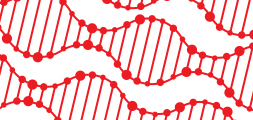

Biosecurity Masterclass
Content
The deliberate misuse of biology is not a new phenomenon in human history, but the focus on terrorism and the potential misuse of ‘advanced’ (genetically engineered) biological weapons is.
In the 1990s, high profile terrorist incidents such as the sarin gas subway attacks in Japan, and 9/11 and the subsequent anthrax letter mailings in the United States in 2001, motivated national and international institutions to focus on bioterrorism threats and to develop a range of biosecurity measures at the international, national and local level. Simultaneous concerns about ‘user-friendly’ biotechnology (e.g. synthetic biology) increased the importance of the ‘dual-use dilemma’ in ethical debates about the ‘good’ and ‘bad’ implications of the life sciences and biotechnology in our daily lives.
Throughout the two-day workshop, journalists and public information professionals will deepen their understanding of biotechnology, its potential applications in bioterrorism, and existing biosecurity measures aimed at preventing deliberate misuse. Participants will also be engaged in a series of brainstorming sessions and practical exercises with eminent scientists, high-level officers and experienced journalists.
Upon completion of the course, participants will have acquired key tools to report compelling news stories, communicate bioterrorist threats, frame bioethical debates, detect inaccurate reporting, and verify reliable scientific sources.
Outline
Day 1 – PART I: Framing the threat and methods of prevention
Day 2 – PART II: The role of media
PART I
Framing the threat
Introduction: Modern biology and the ‘dual-use dilemma’
- Origins of modern biology – the emergence of ‘genetic engineering’ in the 1970s
- Life science advances and media reporting over the last 30 years
- The ‘dual-use dilemma’ – an ‘ethical’ dilemma that has gained growing attention in recent years in light of growing concerns about bioterrorism
- Defining biosecurity
- Preventing bioterrorism
‘Experiments of concern’: Dual-use research in focus
- Case studies and examples of ‘dual-use research’ in modern biology
- Mousepox
- Spanish flu
- Poliovirus
- H5N1 experiments
- Aspects of the science, potential for deliberate misuse, and reactions of different stakeholders/communities, including scientific journals, public health experts, government authorities, media and the public
From biowarfare to bioterrorism: Historical precedents and new axienties
- Biotechnology and bioterrorism in a broader historical context:
- Early examples – humans have been using germs to sicken and kill rival groups throughout history
- Biowarfare programmes – the rise of sophisticated, state-funded biowarfare programmes during WWII and the Cold War
- Bioterrorism – the increased focus on non-state actors that accompanied high profile terrorist attacks in the 1990s (e.g. sarin gas attack in Japan) and early 2000’s (9/11 and anthrax letter mailings), and simultaneous concerns about ‘user-friendly’ biotechnology (e.g. synthetic biology)
Methods of prevention
Introduction: A ‘web of prevention’
- ‘Web of prevention’ – the combination of top-down and bottom-up biosecurity measures taken to prevent the deliberate misuse of modern biology.
The Biological Weapons Convention (international)
- BWC (1972) – establishing a global norm against the misuse of biology for hostile purposes – origin, scope, obstacles to success
- History of unilateral, bilateral and multilateral responses to the threat of bioweapons and weapons of mass destruction (WMD)
- Role of non-state actors and individuals in modern biology
Legislation and law enforcement (national)
- Case studies:
- The Select Agent Regulations
- Oversight of Dual-Use Research of Concern (DURC)
- Counter-terrorism intelligence activities, e.g. FBI WMD Directorate
Bioethics and dual-use education (local)
- Bottom-up biosecurity measures – educating scientists and raising awareness
- Obstacles to success – lack of biosecurity awareness among life scientists, doubts about scientists being `responsible’/‘ethical’ and thus capable of self-governance, scientists’ ambivalence towards the concept of ‘policing themselves’
PART II
The role of media
Introduction: Translating science and security into practical knowledge
- The role of journalists in translating science and scientific jargon into lay knowledge
- Ethical responsibility of journalists to ensure clear and objective communication
- Understanding ‘frontier science’, including its possibilities and limitations
Communicating scientific ‘facts’
- How to treat new scientific knowledge (communicated in high impact journals)
- Understanding the difference between ‘textbook science’ and ‘frontier science’ Debating notions such as ‘breakthroughs’, ‘discoveries’ and ‘revolutionary’ advances
- Risk of oversimplifying the research experience
- Communicating biosecurity concerns and bioterrorist threats
Case studies:
- Press releases, articles, sound bites, and popular media reporting
- Ethics in reporting – responsible risk communication in the media, and the risks of misinforming the public and policymakers
Talking to scientists
- Talking to scientists and observing science being practiced in day-to-day research settings (e.g. university labs or biotech companies)
- Understanding the complexities and uncertainties of research in practice
- Case study:
- Ethnographic research in the fields of Science and Technologies Studies (STS) and the Social Study of Science
Keeping it complex
- How to retain ‘complexity’ and deliver objective reporting and communication
- Potential societal implications – enabling a more nuanced picture of the threats and opportunities posed by advances in modern biology
The role of journalists in promoting responsible science
- Translating scientific knowledge into lay knowledge
- Promoting biosecurity awareness through reporting.
- ‘Culture of responsibility’ and media messages




